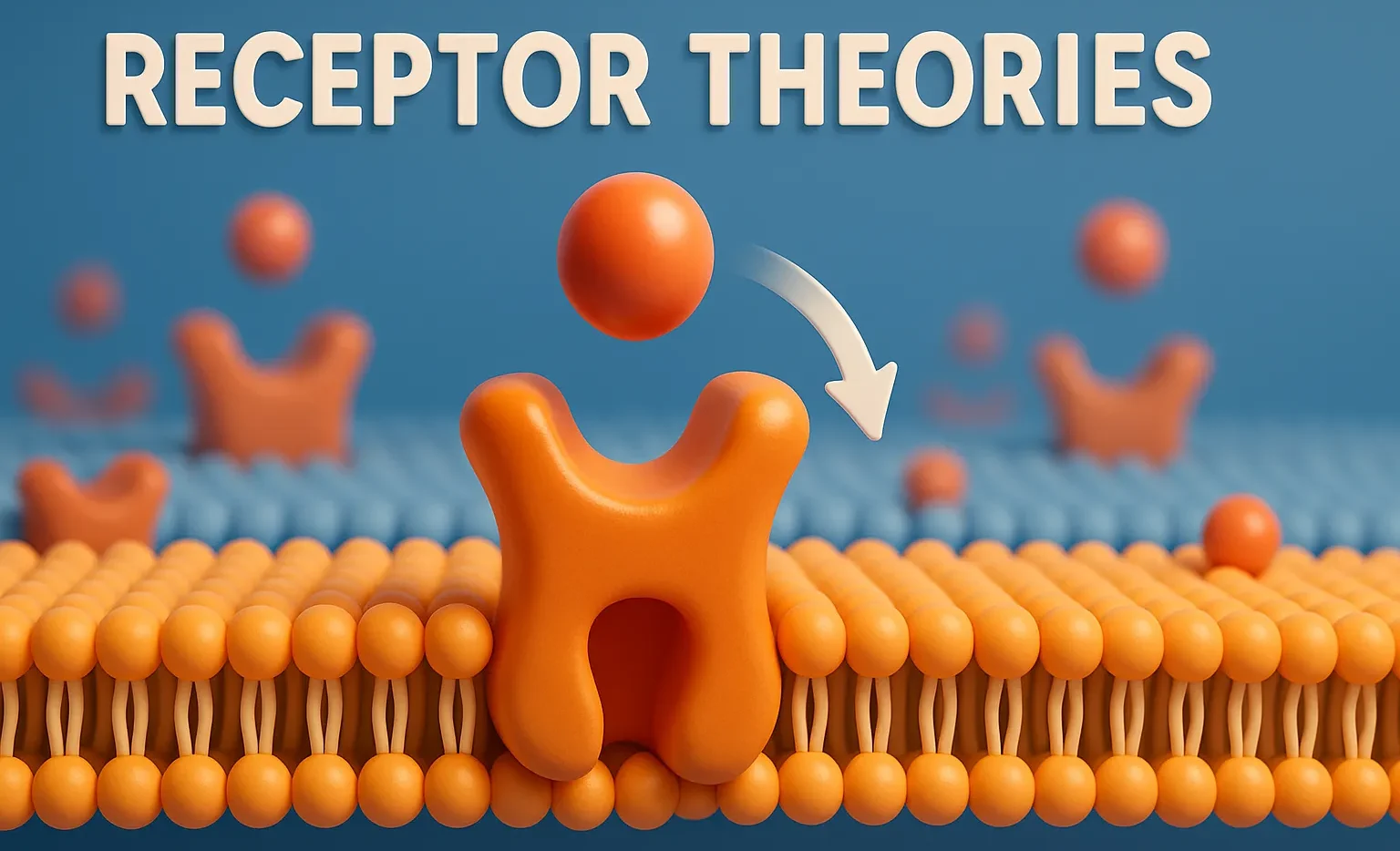Receptor theories explain how drugs produce effects by binding to receptors and activating or blocking them.
Receptor Theories
- These theories explain how drugs interact with receptors and how this leads to a response:
- Historically, various theories have been proposed to explain how drugs interact with receptors and elicit responses:

-
Occupancy Theory (Clark’s Theory)
- The intensity of a drug’s effect is proportional to the number of receptors occupied by the drug.
- Maximal effect (Emax) is achieved when all receptors are occupied.
- Limitations: Does not fully explain partial agonists (drugs that can occupy all receptors but still do not produce a full response).
-
Rate Theory
- Suggests that the response depends on the rate of association and dissociation of the drug-receptor complex.
- Helps to explain why some drugs have an effect that lasts beyond the time they are bound to the receptor.
-
Modified Occupancy Theory / Two-State Model
- Proposes receptors exist in two conformations: an inactive (R) and an active (R)* state.
- Agonists stabilize the receptor in its active conformation (R*).
- Antagonists do not stabilize either state, preventing activation.
- Inverse agonists stabilize the inactive conformation (R), reducing intrinsic activity.
-
Induced Fit Theory
- The receptor changes its conformation upon binding the drug (like a flexible “lock and key”).
- Explains how drug binding can activate or inhibit a receptor.

